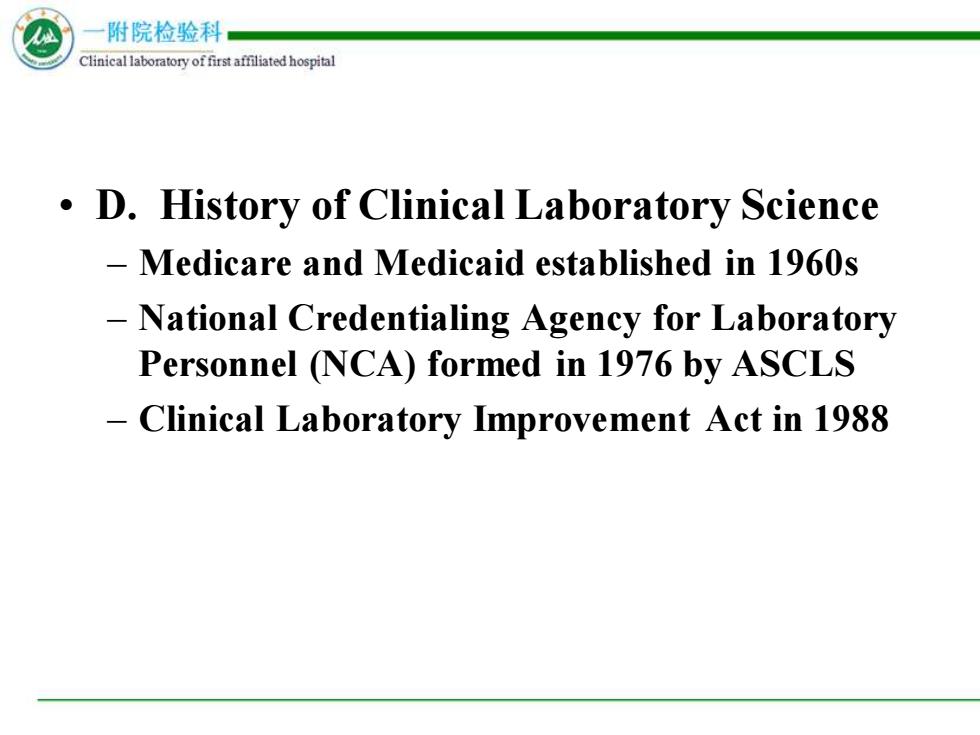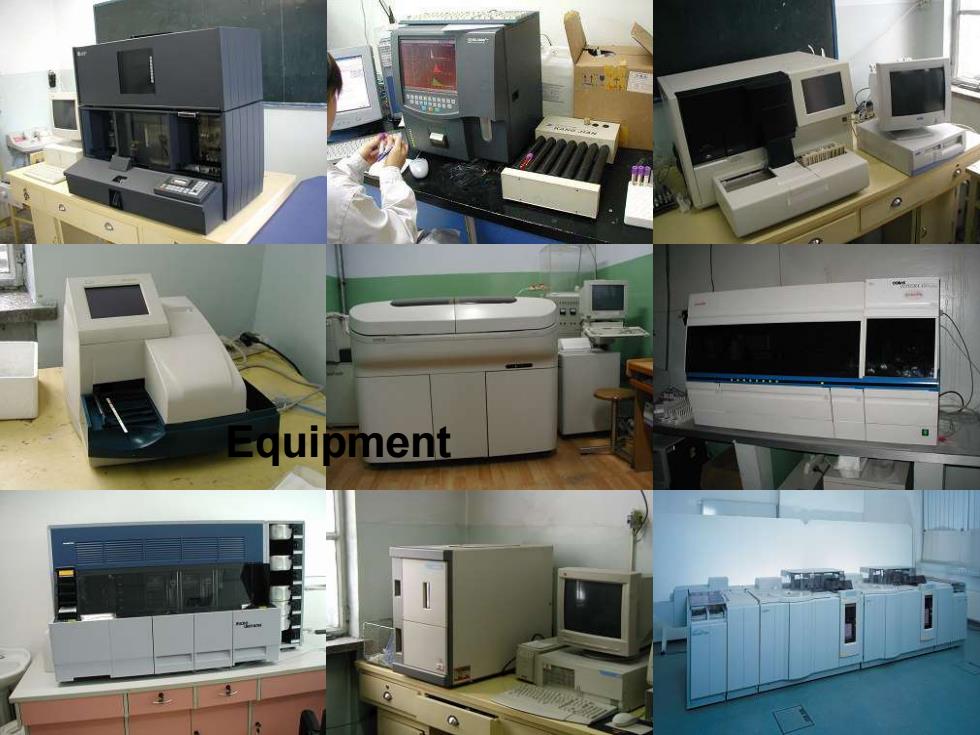
一附院检验科 Clinical laboratoryoffrs affiiated hospital D.History of Clinical Laboratory Science Medicare and Medicaid established in 1960s National Credentialing Agency for Laboratory Personnel (NCA)formed in 1976 by ASCLS Clinical Laboratory Improvement Act in 1988
• D. History of Clinical Laboratory Science – Medicare and Medicaid established in 1960s – National Credentialing Agency for Laboratory Personnel (NCA) formed in 1976 by ASCLS – Clinical Laboratory Improvement Act in 1988

附院检验科 Clinicallaboratory offrst affiliated hospital E.Organization of a typical clinical laboratory Located in hospitals,clinics,doctors'group practices,single doctor offices,health departments,reference laboratories
• E. Organization of a typical clinical laboratory – Located in hospitals, clinics, doctors’ group practices, single doctor offices, health departments, reference laboratories

附院检验科 Clinical laboratory offrs affated hospital What is laboratory diagnosis? Laboratory diagnosis is such a diagnostic process in which the samples coming from patients'blood,body fluid,secretion, excretion tissues and cells are examined by using various laboratory methods to get useful data which may reflects body s functional status,pathological changes and etiological hints
What is laboratory diagnosis? • Laboratory diagnosis is such a diagnostic process in which the samples coming from patients’ blood , body fluid , secretion , excretion , tissues and cells are examined by using various laboratory methods to get useful data which may reflects body` s functional status , pathological changes and etiological hints

Equipment
Equipment

附院检验科 Clinical laboratoryoffrs affiated hospital The clinician's main task is to make decisions about patient care despite clinical information and uncertainty about clinical outcomes. Although data elicits from the history and physical examination are often sufficient for making a diagnosis or for guiding therapy,more information may be required.In these situations,clinicians often turn to diagnostic tests for help
• The clinician’s main task is to make decisions about patient care despite clinical information and uncertainty about clinical outcomes. Although data elicits from the history and physical examination are often sufficient for making a diagnosis or for guiding therapy, more information may be required. In these situations, clinicians often turn to diagnostic tests for help